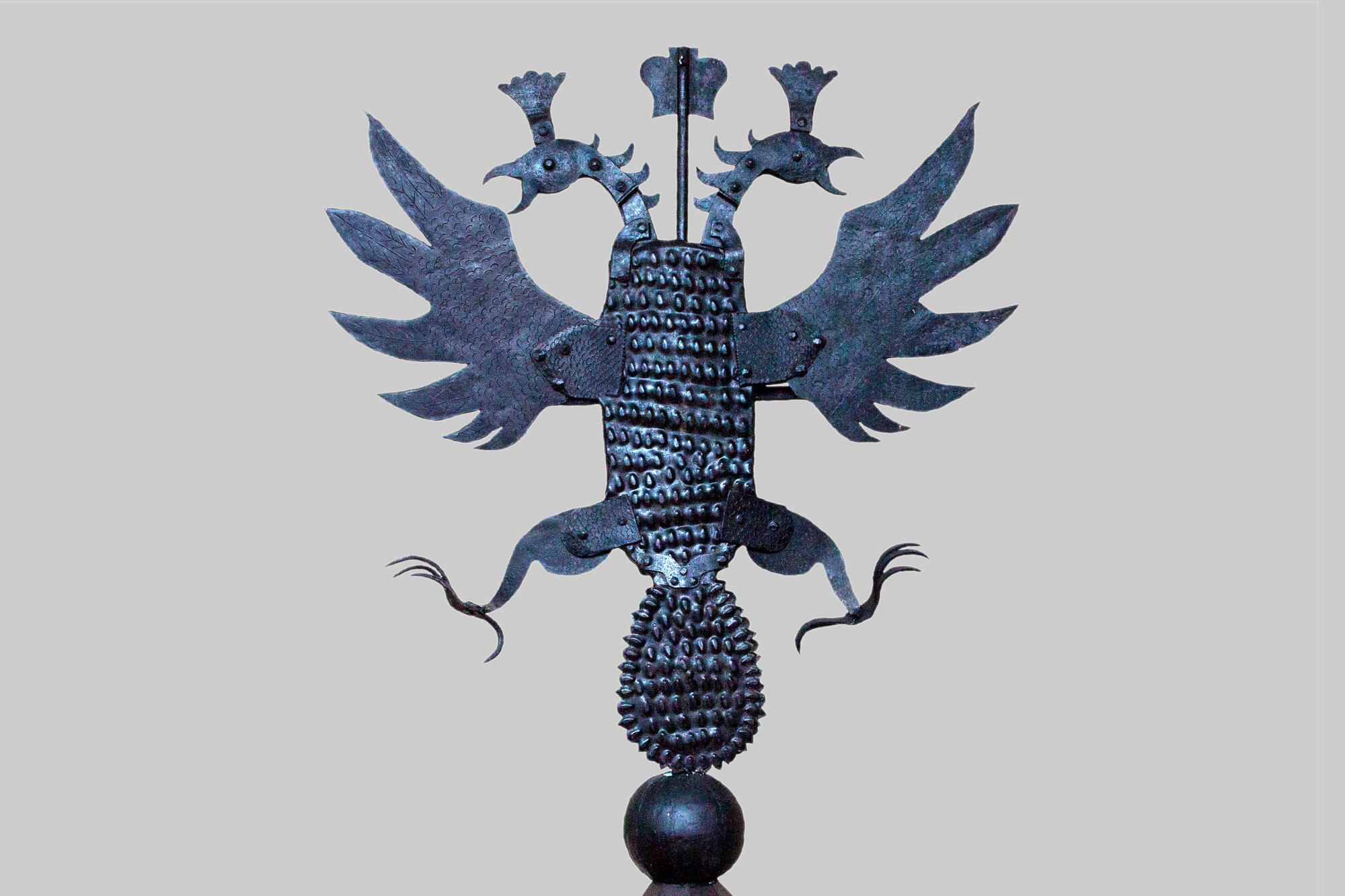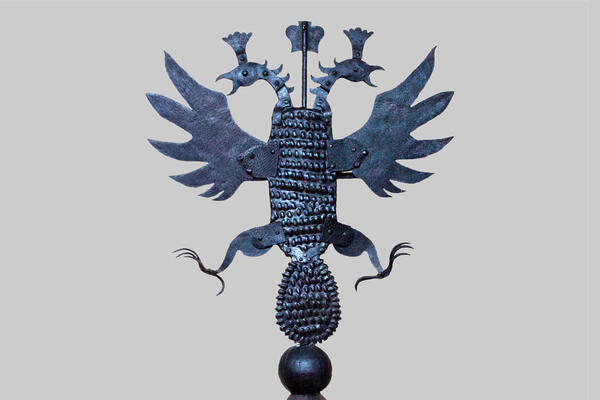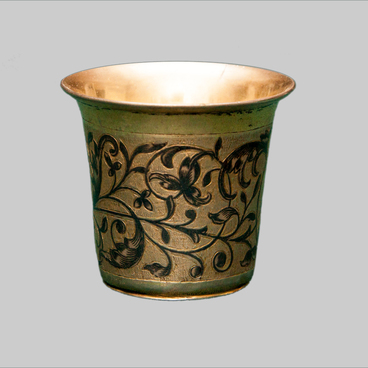We can find one of the first references to this exhibit in the catalogue compiled by the Museum’s curator Nikolai Lytkin. “Archaeological Department of Tobolsk Provincial Museum” was published in 1890. In this catalogue, the curator described all the exhibits, and on page 620 there is an entry: “Wrought iron large double-headed eagle. This eagle was on one of the towers of Tobolsk, which was destroyed in 1887.” Thus, the coat of arms from the tower entered the foundations in the first decades of the Museum’s operation. It is known that the metal sculpture has given the name of one of the towers of the Sofia Court of the Tobolsk Kremlin, which is in commonly referred to as ‘Orlovskaya’.
The building of early military fortifications in Tobolsk began at the end of the 17th century, when stone works in the Siberian city were only developing. In height, they reached about 17 meters. ‘The tower barrel expanded at the top to form a machicolation. There were round holes for a two-tiered fight in their smooth walls. The towers were completed by high brick tents, covered with tiles and decorated with wrought iron weaves and flags’, so the Kremlin towers were described by Viktor Kochedamov in the book ‘Tobolsk. How the city grew and was built’. The wrought double-headed eagle is the only genuine topper that survived several centuries later.
Apparently, this symbol installed on the architectural structure further emphasized the high status of Tobolsk as the administrative and spiritual center of Siberia.
In the 20th century, the museum fund served as a basis for reconstruction works in the Tobolsk Kremlin. In the 1950s, Moscow architect Fyodor Dubrovin explored the remains of the northeastern Orlovsky Tower, and some time later a new-build was constructed on this site on his initiative. The model for its construction was the only well-preserved southern round tower (with machicolations - hinged battlements, holes for round combat and other attributes of architecture). And the top of the new building was decorated with a gilded double–headed eagle – it was reconstructed on the model of a museum exhibit.
The building of early military fortifications in Tobolsk began at the end of the 17th century, when stone works in the Siberian city were only developing. In height, they reached about 17 meters. ‘The tower barrel expanded at the top to form a machicolation. There were round holes for a two-tiered fight in their smooth walls. The towers were completed by high brick tents, covered with tiles and decorated with wrought iron weaves and flags’, so the Kremlin towers were described by Viktor Kochedamov in the book ‘Tobolsk. How the city grew and was built’. The wrought double-headed eagle is the only genuine topper that survived several centuries later.
Apparently, this symbol installed on the architectural structure further emphasized the high status of Tobolsk as the administrative and spiritual center of Siberia.
In the 20th century, the museum fund served as a basis for reconstruction works in the Tobolsk Kremlin. In the 1950s, Moscow architect Fyodor Dubrovin explored the remains of the northeastern Orlovsky Tower, and some time later a new-build was constructed on this site on his initiative. The model for its construction was the only well-preserved southern round tower (with machicolations - hinged battlements, holes for round combat and other attributes of architecture). And the top of the new building was decorated with a gilded double–headed eagle – it was reconstructed on the model of a museum exhibit.



